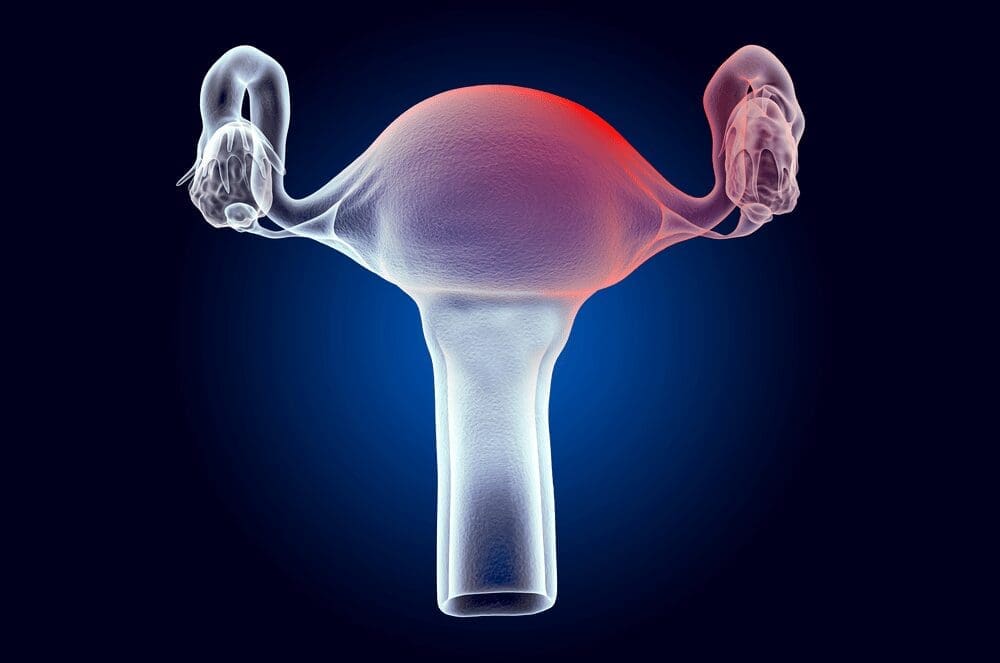At North Texas Fibroids of Cedar Hill, Dallas, and Flower Mound, TX, we offer uterine fibroid embolization to help our patients that are battling the symptoms of fibroids. Often called UFE, this minimally-invasive treatment is one we’re proud to offer, and we’re happy to help our patients better understand how it works.
How Long Does Uterine Fibroid Embolization Take?
Your uterine fibroid embolization will be carried out by an interventional radiologist who specializes in minimally invasive treatments. Once we go over your health and run any necessary tests, we will be able to begin the process. The whole treatment usually can be carried out within an hour.
How Does Uterine Fibroid Embolization Work?
You may have heard UFE referred to as uterine artery embolization. Either way, the treatment is a way to help patients avoid more invasive surgeries. First, we will make a very small incision in the femoral artery. With the help of imaging technology, we will be gently guiding a catheter through this artery until we reach the problematic fibroid.
Once we reach the fibroid, we will be able to cut off the blood supply that’s feeding the fibroid. This is done by releasing tiny spheres made of embolic material. With no way to get the nutrients or oxygen it needs to grow, the targeted fibroid will gradually shrink and die. Once treatment is delivered, we can then close your incision.
What Benefits Can UFE Offer?
Daily Relief
Chronic pain can take a toll on a person’s mental and physical energy. If uterine fibroids are causing painful symptoms, they could be getting in the way of your comfort during work as well as your social life or favorite hobbies. We want our patients to be able to enjoy their life without being held back by their fibroid symptoms.
Menstrual Cycles
Menstrual cycles are rarely enjoyable, but painful cycles and heavy bleeding have been so normalized that many patients don’t realize that fibroids could be contributing to these symptoms. If fibroids are contributing to their painful cycles, patients who have been trying to just tough it out may be able to find relief through UFE.
During your cycle, are you passing clots that are the size of a quarter or larger? Do your periods drag on for longer than a week? If so, that’s considered heavy bleeding. This type of period can make you feel lethargic or be paired with powerful cramps. If we determine that your fibroid is likely contributing to the issue, removing it may help balance out your cycle.
Urinary Incontinence
Depending on their placement, uterine fibroids can end up putting pressure on the bladder. That means there’s less room in your bladder to store urine. Urinary incontinence can range from mild to severe but is always an annoyance. It could be interfering with your ability to get a good night’s sleep. You may also find yourself wearing menstrual pads daily to protect yourself from an accident or feeling nervous when you laugh.
Fibroids can also lead to constipation if they put pressure on your rectum. If your uterine fibroids are contributing to either of these symptoms, we would be happy to help you find relief.
Gentle Process
Traditionally, the treatment for uterine fibroids was to completely remove the uterus. The uterus can be removed through laparoscopy, a traditional incision, or through the vagina. Whenever possible, the ovaries will be left so they can continue to regulate your hormones.
Removing the uterus is a fairly involved process and can be overwhelming for a patient to consider. A uterine fibroid embolization does not require the removal of your uterus and helps patients avoid more serious surgical options.
Easier Adaptation
Anyone who’s suffered through serious cramping during their menstrual cycle may have moments of wishing they could throw out their uterus. That said, many patients don’t actually want to have their uterus removed. They may feel that losing their uterus would be losing a part of themselves or their identity.
Even if the patient doesn’t plan on becoming pregnant, facing the removal of their uterus can be a difficult emotional adjustment. While removing the uterus may be necessary in some cases, UFE is extremely effective and can help many patients avoid losing their uterus.
Comfort During Intimacy
Depending on the size and location of the fibroids, they can make sex painful. This can be very distressing, as this is an important way for many patients to bond and connect with their significant other. Sometimes changing positions can help if you can avoid putting pressure on the fibroids. However, in some cases, it can be very challenging to avoid irritating uterine fibroids during sex.
If you find yourself avoiding intimacy due to the pain of your fibroids, shrinking these fibroids down could offer drastic benefits by increasing your comfort levels. If you bleed after intercourse, treating your fibroids may also help with that.
Leg and Back Pain
You may not imagine that fibroids in your uterus could lead to leg and back pain, but if the fibroid is positioned near the back of the uterus it could end up putting pressure on the nerves and tissues near your back. If you have mystery leg and back pain that you haven’t been able to find an answer for, you may want to look into whether uterine fibroids could be contributing to the problem.
What Are Fibroids?
The word “tumor” can bring up a lot of anxiety, but this is what fibroids technically are. The good news is, uterine fibroids are almost always benign, which means they are very rarely cancerous. That said, if you have fibroids that are rapidly growing after you’ve already gone through menopause, it’s probably a good idea to rule out cancer just in case.
Fibroids are very common, and they don’t always cause problems. Some fibroids are so small you may never know you have them or experience any symptoms from them. However, if fibroids are discovered, it’s important to keep track of their location and size. Tracking growth will help you decide when the fibroids may need to be treated or whether they could lead to symptoms down the road.
Various Causes
We would love to give our patients a clear answer as to why uterine fibroids show up, but the cause behind these fibroids is not completely understood yet. Patients who are in their childbearing years are the most likely to develop uterine fibroids.
Prepubescent or post-menopausal patients are much less likely to develop fibroids, which could be due to the fact that these patients often have lower levels of estrogen.
The Need for Treatment
If you have been told you have fibroids, but the fibroids are very small and not causing any negative symptoms, you may not need treatment. If the fibroids are growing or have the potential to eventually cause issues, it may be a good idea to look into uterine fibroid embolization.
Fibroids can range dramatically in size, with some reaching up to the size of a watermelon. Since the uterus is normally the size of a pear, you can imagine that a fibroid of that size would likely cause some serious discomfort. Fibroid location is also a factor to consider. Many fibroids are located inside the uterus, but others are able to develop in or outside of the uterine wall.
Fibroid Symptoms
Fibroids can lead to a range of symptoms, some of which are fairly vague. This may lead to patients not always knowing when they have fibroids. When pressure is put over the fibroid’s location, some patients may experience sharp pain. Other patients don’t have any sharp pains but rather have a chronic “heavy” or “burning” sensation around the fibroid.
Since self-diagnosis can be very difficult, we recommend seeking out a professional evaluation if you suspect you may have a uterine fibroid. A diagnosis can help you rule out other potential issues that may have overlapping symptoms to uterine fibroids. It is also the first step to getting a good idea of how large your fibroid is and what your treatment options are.
Your Diagnosis
Sometimes fibroids are discovered during a routine pelvic exam, but there are other tools that can be used to provide a diagnosis. An ultrasound can be very helpful, as can an MRI. Other options include a hysteroscopy, CT scan, sonohysterography, hysterosalpingography, or laparoscopy.
Ready for a Consultation?
During your consultation, we can talk you through the process in more detail. We’ll be able to go over your needs and expectations as well, so you have the information you need to make the best choice. Reach out to us at North Texas Fibroids in Dallas, Cedar Hill, and Flower Mound, TX today to meet with us.


